Tajik Beverages: Basic Overview
Common Ingredients
Common Preparing Methods
Key Taste
Drinking Etiquette
Culinary Festivals
Influence and Fusion
Types of Tajik Beverages
-
Hot Non-alcoholic
Tajik hot non-alcoholic beverages are staples, particularly during colder months.
They are a central part of social and daily life.
-
Cold Non-alcoholic
Cold non-alcoholic beverages in Tajik cuisine are characterized by their refreshing, natural flavors, and are typically vegan and gluten-free.
They include sweet and complex tastes, as well as milk-based drinks.
-
Distilled Alcoholic
Distilled alcoholic beverages, like vodka, are also popular, reflecting Russian culinary influence.
Tajik Beverages: Signature Dishes and Beverages
-
Most Popular Beverages
These beverages are a staple in Tajikistan, renowned for their unique flavors and wide appreciation within the country.
Available in cafes, tea houses, and markets, they offer a refreshing taste of Tajik culture.
-
National Beverage
The national beverage of Tajik cuisine is green tea.
In Tajik culture, green tea is often consumed throughout the day and plays a significant role in social gatherings and hospitality.
-
Traditional Beverages
With recipes passed down through generations, traditional Tajik beverages are a testament to the country’s rich history and cultural diversity.
Some of these traditional drinks have gained national recognition, beloved by locals and international visitors alike.
Tajik beverages include both alcoholic and non-alcoholic drinks in Tajikistan. Green tea is considered the country’s national drink and is consumed throughout the day.
In addition to green tea, locals sometimes consume shirchai (sirchoy), a drink prepared by mixing black tea with milk. Due to Russian culinary influence, the fruit-based beverage kompot is also popular.
Although Tajikistan’s primary religion is Islam, which discourages alcohol consumption, beer and vodka are common beverages in this Central Asian country.
There are many other interesting facts about beverages in Tajikistan, such as the nation’s tea culture, way of serving tea, the alcoholic drink scene, and the best dishes to pair with drinks. I will help you make sense of them all.
Scroll down for more information, and use the interactive filters to make your experience more immersive!
3 Most Popular Tajik Beverages with Filters
#2
in Tajikistan
#1
in Tajikistan
#3
in Tajikistan
Tajik Beverage Images
What Is Tea Culture in Tajikistan Like?
Tajikistan has a long history with tea, which was spread from China to Central Asia via the Silk Road during the Tang Dynasty (618–907 CE). Below are some interesting facts about local tea culture.
- Green Tea Preference: While its Central Asian neighbors mainly enjoy black tea, Tajiks drink green tea year-round, especially in the summer. However, people sometimes consume black tea in the winter.
- Ubiquitous in Social Settings: People enjoy tea on many occasions, from daily meals to holiday feasts, from friendly chats to religious ceremonies and business meetings.
- Meal and Snack Companion: Tea is suitable for mealtimes (including dinner) and snack times.
- Social and Trust Builder: Locals usually discuss life stories, news, or anecdotes while drinking tea. Therefore, tea helps strengthen social bonds and build trust in Tajikistan.
- Hospitality and Etiquette: It’s common for Tajiks to offer tea to guests immediately upon arrival, and refusing tea can be considered rude.
- Chaikhanas as Social Centers: Teahouses (known as chaikhana in Tajik) are important social hubs in Tajikistan, where locals can enjoy tea in an elegant setting alone or with their friends.
- Notable Teahouses: Tajikistan has some of the biggest teahouses in Central Asia, including a melon-shaped one opened in 2015.
Are you curious about how Tajik people serve tea? Scroll down to find out the answer!
How Do People Serve Tea in Tajikistan?
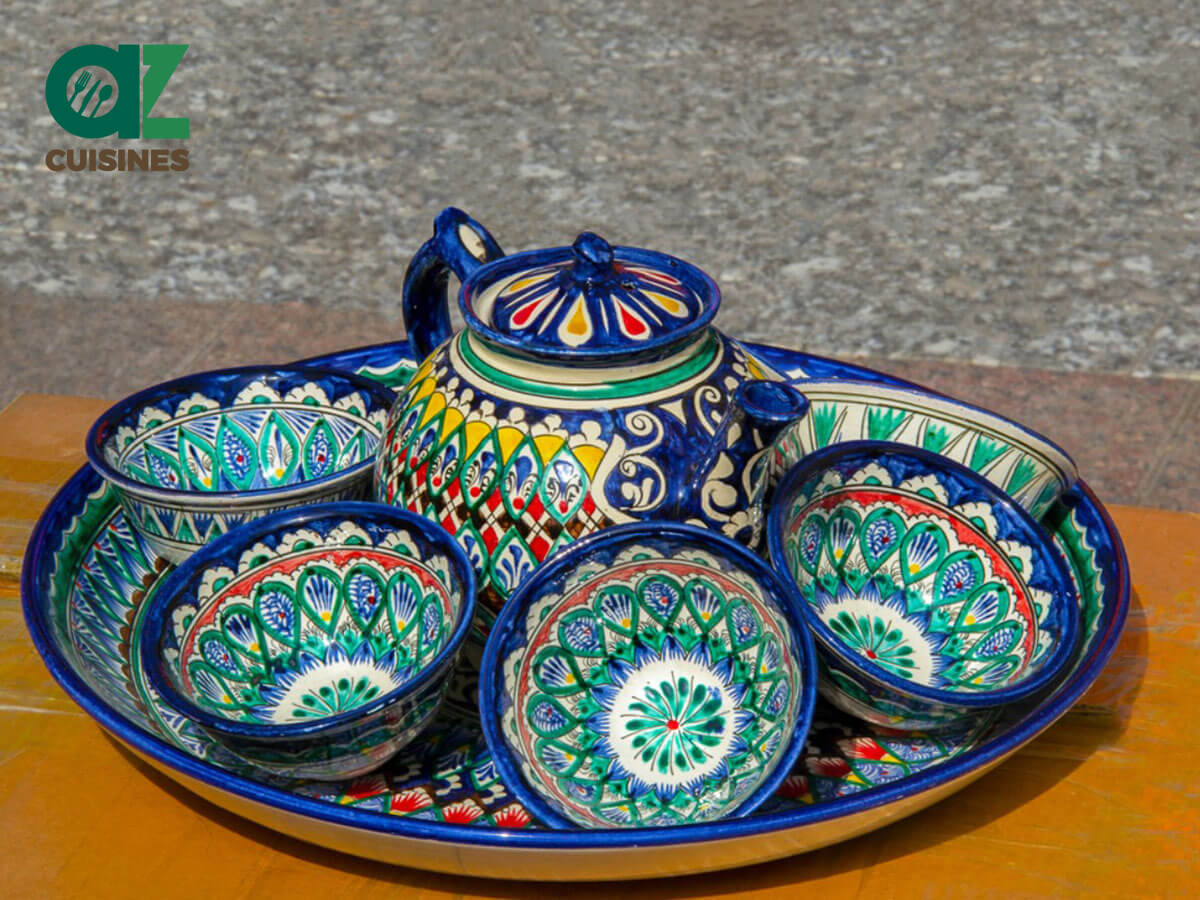
Here is an overview of the way people in Tajikistan brew and enjoy tea.
- Traditional Seating Arrangement: In traditional teahouses or households, people sit on thin mats or cushioned benches around a low table to enjoy tea.
- Tea Varieties and Additions: Tajiks often drink plain, unsweetened green tea. But locals sometimes add novvot (Persian-style rock sugar), butter, or milk to black tea.
- Distinctive Tea Bowls: Tea comes in ornate ceramic bowls called pialah (piyāla), which are placed on a tray.
- Tea Accompaniments: Popular accompaniments for tea are nuts, dried fruits, sweets, and pastries.
- Signaling with Tea Cup: When a Tajik doesn’t want any more tea, they will place their cup upside down. This action may also signal that they want to end the ongoing conversation (if any).
Although tea is the most prevalent beverage in Tajikistan, alcoholic beverages also have a considerable presence, which I will tell you right away.
How Popular Are Alcoholic Drinks in Tajikistan?
Despite the Islamic teachings on alcohol, many Tajiks are heavy drinkers. However, alcohol consumption in Tajikistan is relatively more moderate than in neighboring Central Asian countries.
Vodka is highly popular in Tajikistan, illustrating its culinary exchange with Russia. Another well-known option is beer, with pale lagers accounting for the lion’s share of the market.
Tajiks usually pair alcoholic and non-alcoholic beverages with traditional dishes, which I will explore next.
What Are the Best Tajik Dishes to Serve With Traditional Beverages?
Here are my suggestions on the most excellent beverages to accompany notable beverages in Tajik cuisine.
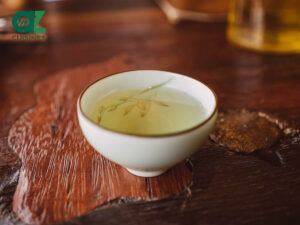
Green Tea
Green tea is the ultimate accompaniment for many Tajik savory foods. Classic dishes like qurutob, manti, plov, manti, sambusa, and laghmon go well with this drink.
In addition, the sweetness and richness of Tajik treats like halvaitar or dried apricots are ideal for the grassy bitterness of green tea to shine through.
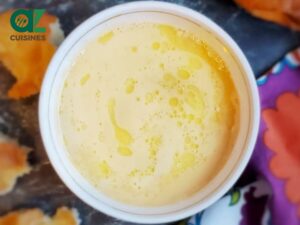
Shirchoy
Though Tajiks usually enjoy shirchoy on its own, pairing this creamy beverage with non or halvaitar is an enjoyable choice.

Vodka
Like other strong spirits, vodka should accompany rich, savory, and usually meat-based dishes, such as plov, sambusa, shashlik, yak kebab, and dimlama.
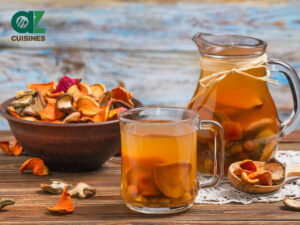
Kompot
The sweet and tart goodness of kompot can be complemented with halvaitar or dried fruits, especially dried apricots.
Do you want to learn more about beverages in Tajikistan? Check out more information in the FAQs section!


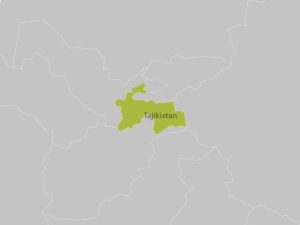
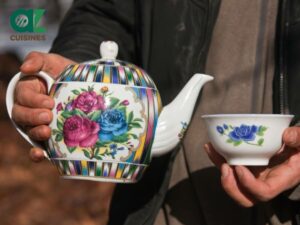
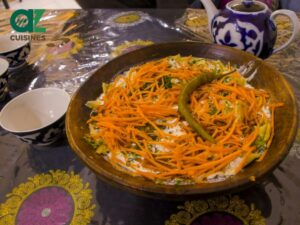
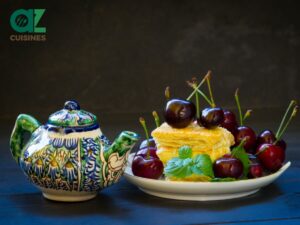
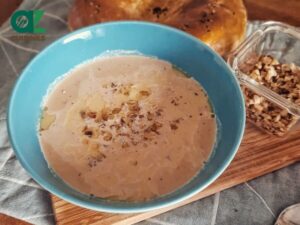
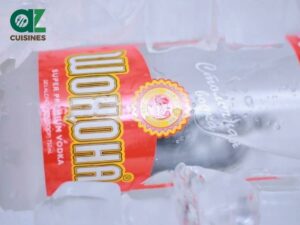
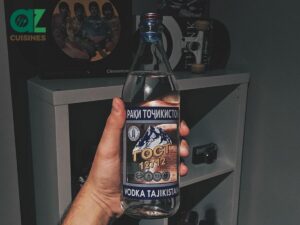
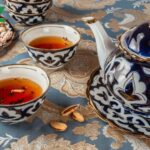
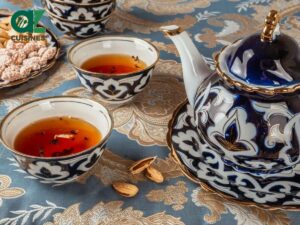
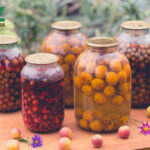
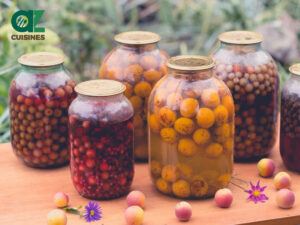


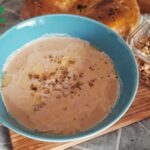
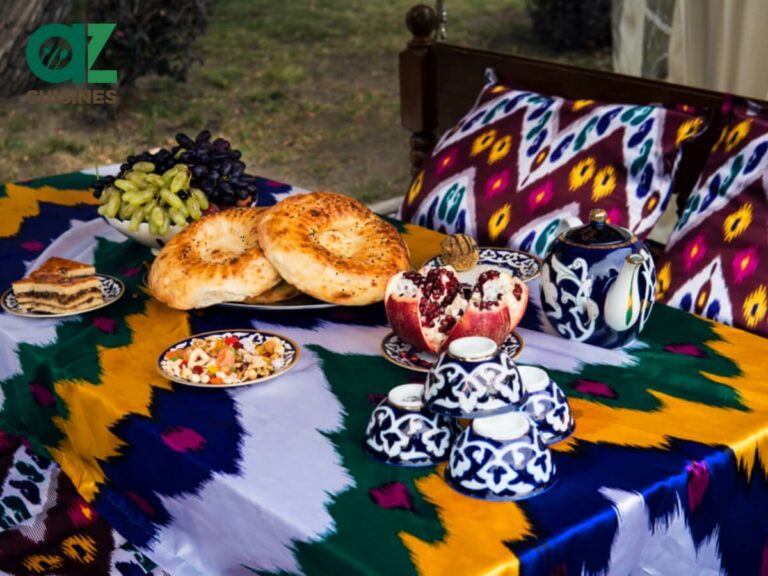
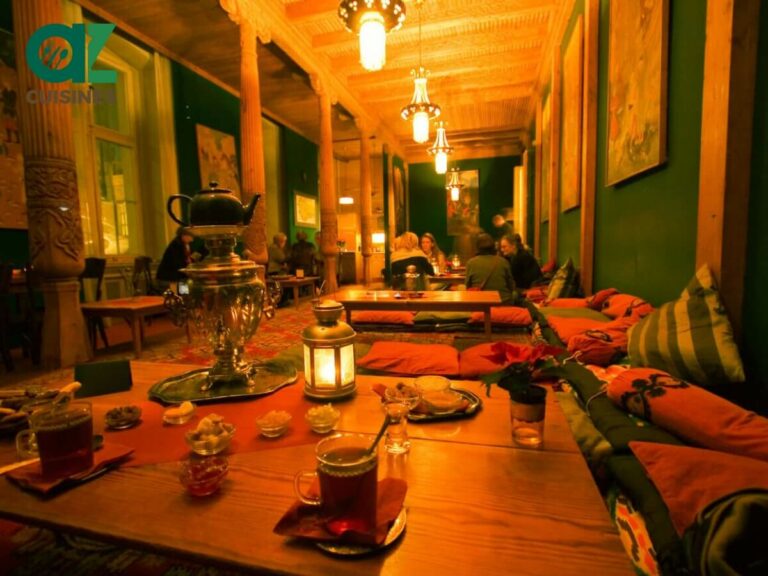
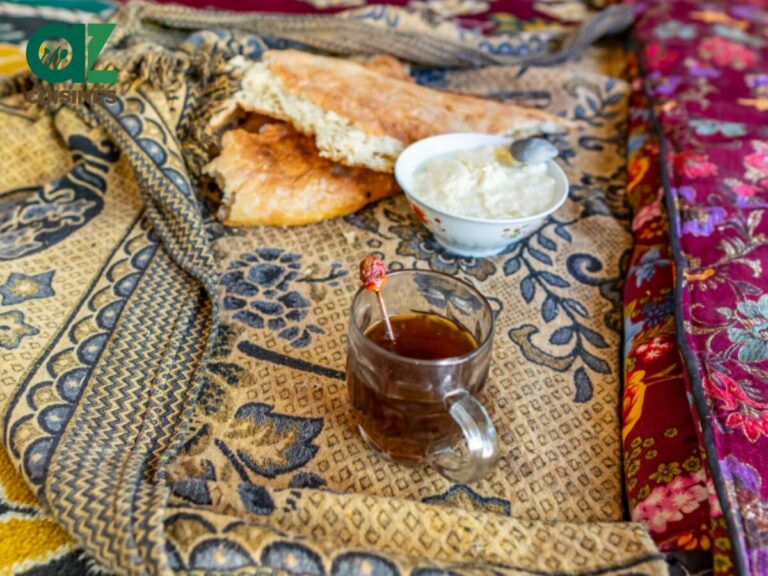
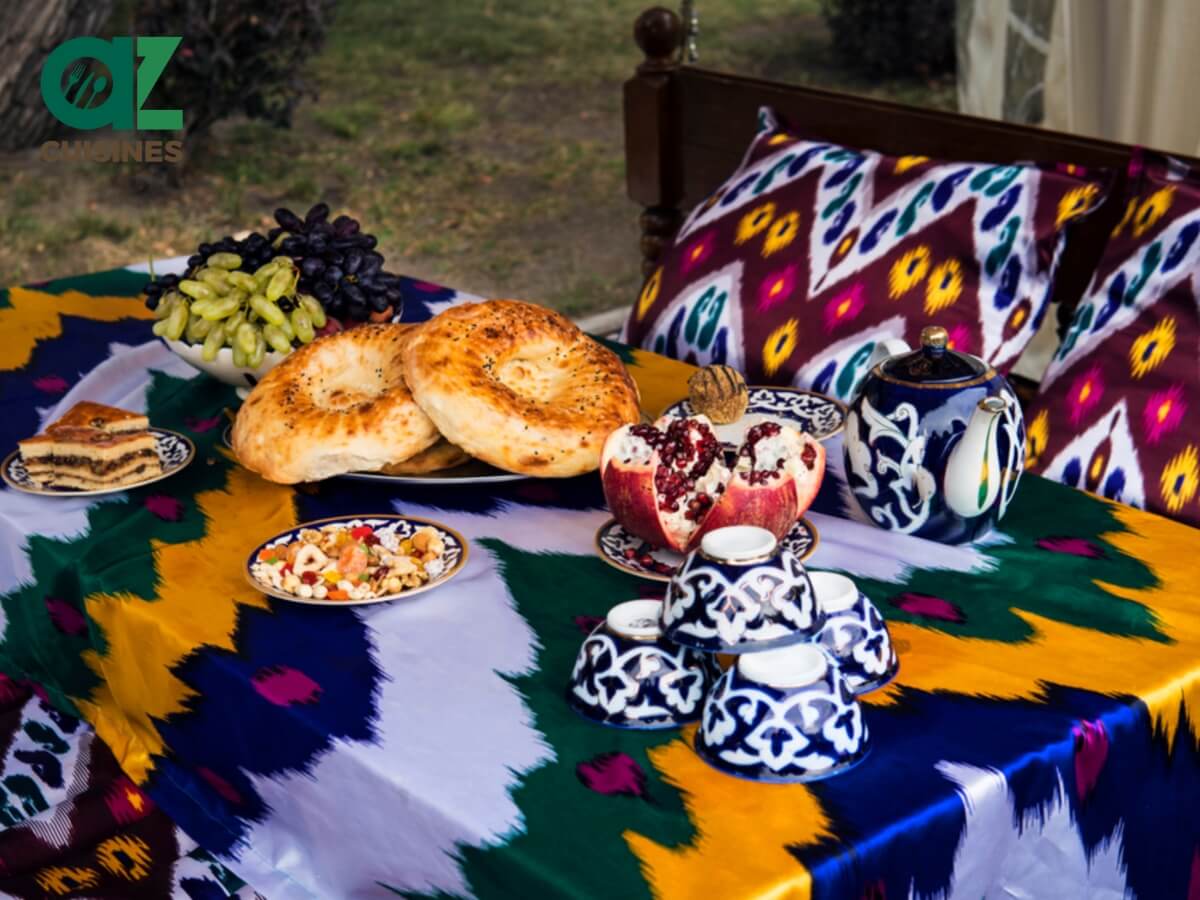
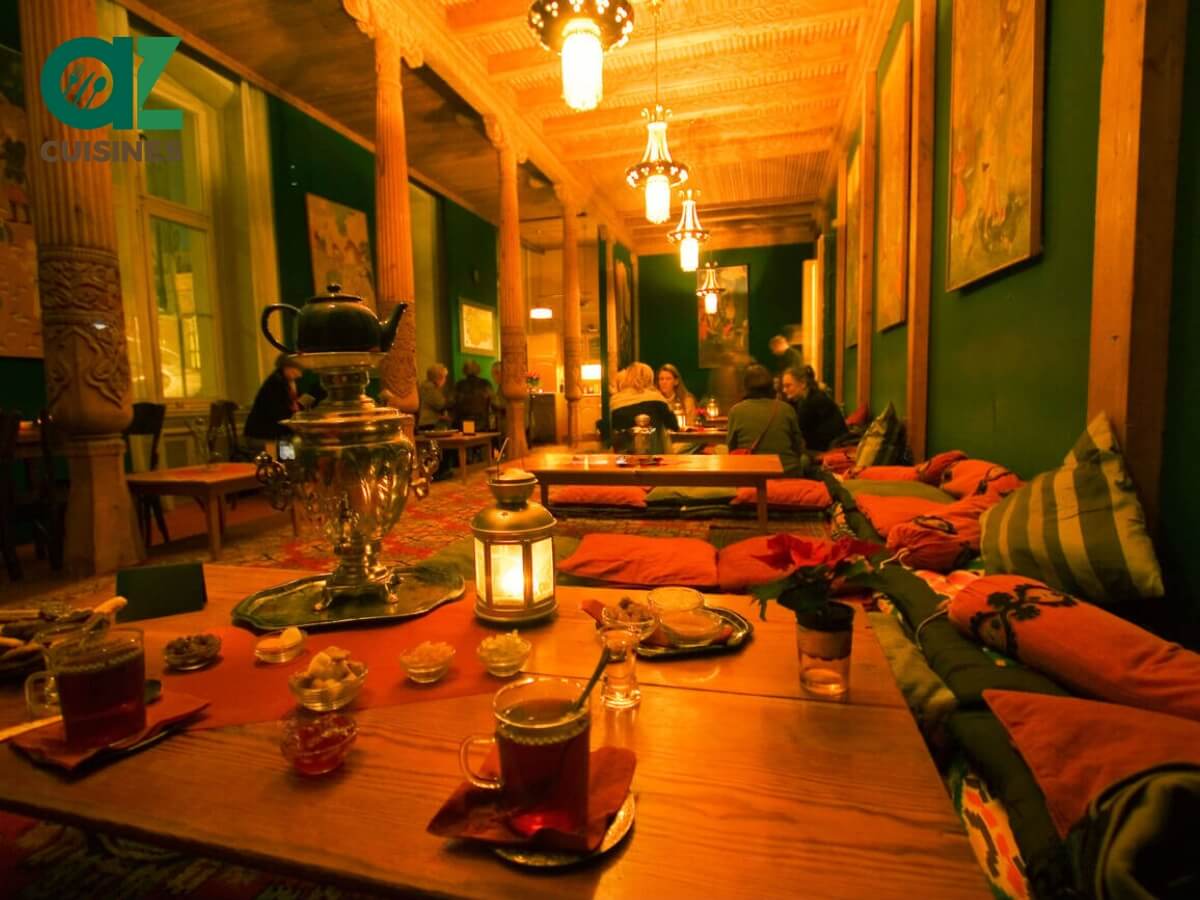
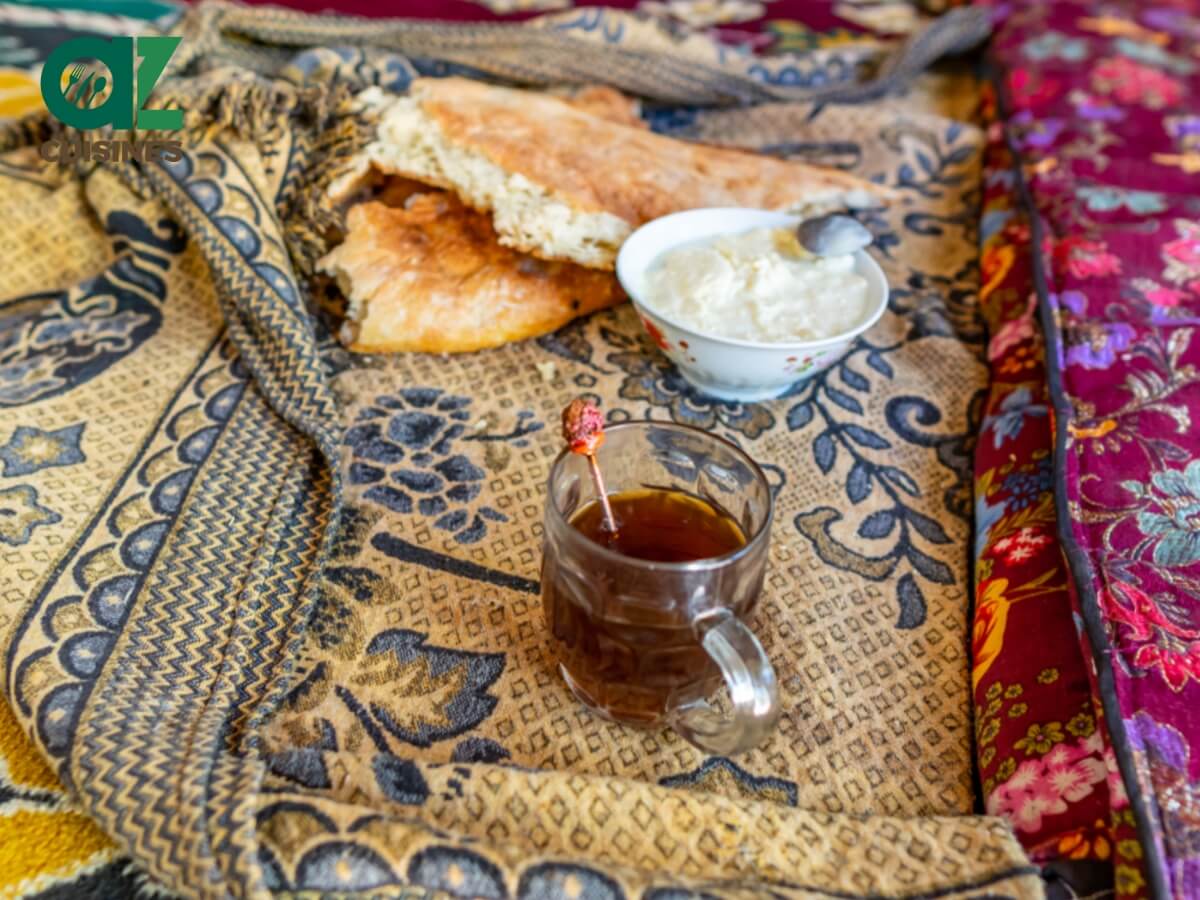
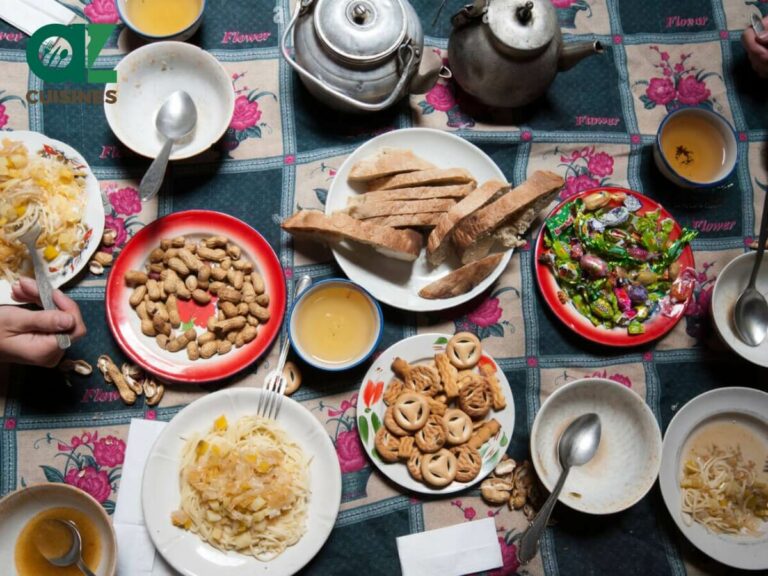
Adam Sam
Senior Food and Drink Editor
Expertise
Food Writer & Recipe Developer, Recipe Tester, Bartender, Cooking-video Maker, Editor In Chief
Education
Adam Sam, an experienced food writer and recipe developer, is passionate about blending diverse culinary traditions, national dishes, and innovative beverages, showcasing his proficiency in both traditional and modern recipe testing.
As the Editor-in-Chief, he elevates culinary content from street food to fine dining, focusing on Western cuisine and types of drinks at azcuisines.com, and is professional in creating engaging cooking videos that simplify complex dishes and ingredients.
His passion for food is evident in his writing, where he uniquely merges various cultures, traditions, and contemporary trends, skillfully combining classic recipes with modern cooking methods.